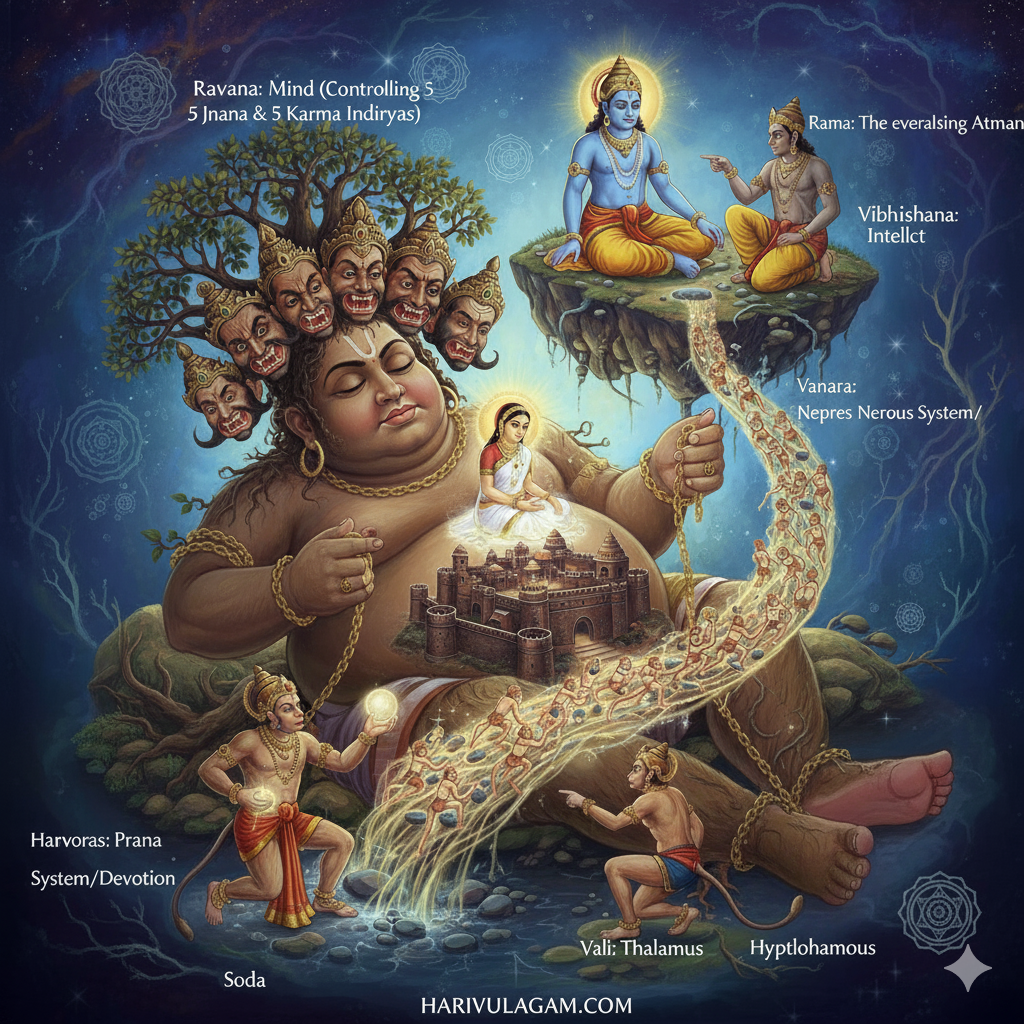
Wishing you and your family a very Happy Deepavali with quantum technology crackers from Harivulagam.

Wishing you and your family a very Happy Deepavali with quantum technology crackers from Harivulagam.
Have you ever considered how the vastness of the cosmos, the complexity of life, and the abstract depths of our own minds might all be part of a single, continuous loop? What if the “beginning” and the “end” aren’t distinct points, but the very same?
This is a journey we’ve embarked on, exploring ideas that span millennia—from ancient Sanskrit wisdom to cutting-edge physics—and uncovering a profound, unifying principle: everything is connected in an infinite, self-referential circle.
(more…)The Pancha Kanya Sloka
Sanskrit:
अहल्याद्रौपदीसीतातारामन्दोदरीतथा।पञ्चकन्याःस्मरेन्नित्यंमहापातकनाशिनीः॥
Transliteration:
Ahalya Draupadi Sita Tara Mandodari tatha Panchakanya smarennityam mahapataka nashinih
The Meaning
“Remember daily the five maidens (Pancha Kanya) — Ahalya, Draupadi, Sita, Tara, and Mandodari — who destroy the greatest of sins.”
The Pancha Kanya Sloka, which honors five revered women from these epics, is often seen through a traditional, patriarchal lens. But what if these women are not just symbols of fidelity, but powerful archetypes of a sustainable way of life? What if the sloka is a sacred guide for nourishing not just our souls, but our bodies and the very Earth that sustains us?
(more…)Title: The Inner Ramayana: A Journey Through the Seven Kandas of the Self
For millennia, the sacred epic of Ramayana has graced the hearts and minds of seekers. We know it as the story of a righteous prince, a divine consort, a ten-headed demon, and a heroic quest. But what if the Ramayana is not just a story that happened once, long ago? What if it is the story happening within each of us, right now?

This interpretation invites you to look at the Ramayana as a sublime allegory for our own inner spiritual journey—the eternal struggle between the ego and the Self. Let us walk through the seven Kandas and map the epic events to the landscape of our own consciousness.
(more…)In the vast and diverse landscape of Hindu philosophy, the ultimate goal of human life is Moksha, liberation from the cycle of birth, death, and rebirth (Samsara) and the attainment of a state of absolute freedom, peace, and union with the divine. To achieve this profound state of being, ancient Hindu scriptures, particularly the Bhagavad Gita, outline four primary paths, or yogas: Bhakti Yoga (the path of devotion), Jnana Yoga (the path of knowledge), Karma Yoga (the path of selfless action), and Raja Yoga (the path of royal meditation).

While these paths appear distinct in their approach and practices, they are ultimately understood to be different avenues leading to the same summit of spiritual realization. They cater to the varied temperaments and predispositions of individuals, offering a spiritual framework that is both personal and universal.
(more…)On this Sunday afternoon here in Chennai, a fascinating line of thought took root and blossomed into a comprehensive vision, connecting the deepest truths of our Sanatana Dharma with the cutting-edge discoveries of modern physics. What if the rishis and the physicists, separated by millennia, were describing the same reality using different languages?
Join us on a journey that starts with simple color codes and ends with a complete, divine model of the atom.
Our exploration began with how ancient traditions use color to symbolize growth.
(more…)“The Mystery of Life and Science”
At the heart of the universe lies a profound truth, encapsulated in a single phrase from ancient texts: “thoonilum iruppan and thurumbilum iruppan”—”He is in the pillar and in the speck of dust.” This declaration of divine omnipresence is the central mystery that science and spirituality have both attempted to solve. This project aims to bridge these two worlds, revealing a single, cohesive narrative that finds the universe’s grandest principles mirrored in its most minute parts. By exploring the connections between modern scientific concepts and timeless Hindu philosophy, we embark on a journey to understand the mystery of life itself, from the cosmos to our own consciousness.
(more…)This is my story – Mystery of Mahabharata unfolded.
The insightful allegory positions Karna as the profound embodiment of the human eye, not merely as a sensory organ, but as a complex symbol of perception, protection, empathy, and the journey of self-awareness.
(more…)We begin with the fundamental building blocks of all matter.
Long, long ago, in the warm, green lands of South India, lived a group of the most incredible people you could ever imagine. They were called the Siddhargal, which in the ancient Tamil language means “the perfected ones”. But who were they, and what made them so special? Imagine combining the wisest teacher, the most brilliant scientist, the kindest doctor, and the most adventurous explorer into one person—that’s what a Siddhar was like. They were not mythical figures from a fairy tale; they were real men and women who, through incredible dedication, secret practices, and a deep love for the world, were said to have achieved a ‘god-like’ state.
(more…)